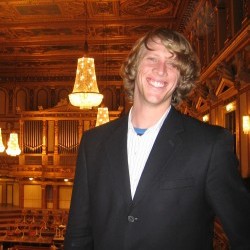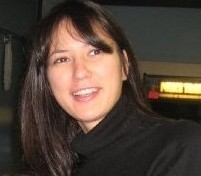After Graduation
Art is everywhere—and so are art majors. They work in galleries, in publishing companies, auction houses, photography studios, and everywhere else an eye for detail and an understanding of aesthetics are needed.

Former students are also practicing artists and designers, as well as university and secondary school teachers of art. Others go on to become architects, museum curators, gallery directors, and writers and editors for arts publications. Some majors have pursued careers in such diverse areas as business, advertising, law, medicine, and health care.
Many art majors go on to receive advanced degrees, including MFA in painting, sculpture, interior design, graphic design, and medical illustration; MBA in arts administration; master’s in architecture; and master’s and Ph.D. in art history. They have attended such institutions as American University, Bard College, Drexel University, Maryland Institute of Art, New York University, Princeton University, Sarah Lawrence College, San Francisco State University, Syracuse University, Temple University, Tulane University, University of Georgia, The School of Visual Arts, and University of Pennsylvania.
 Lafayette is a place where you can chart your own course, and that’s just what Banks T. Clark ’10 did. An art and self-designed interdisciplinary major in the philosophy of religion, Clark says he sees much in common “between the ways in which people inquire into art and into religion. The tension between these spheres is a source of constant interest for me.”
Lafayette is a place where you can chart your own course, and that’s just what Banks T. Clark ’10 did. An art and self-designed interdisciplinary major in the philosophy of religion, Clark says he sees much in common “between the ways in which people inquire into art and into religion. The tension between these spheres is a source of constant interest for me.”
It was a class on American art taught by Professor Mattison that set him on his current trajectory. “In that class, I found a unique mixture of intellectual rigor and visual creativity that resonated well with me. I found myself scholastically spellbound by the narratives of history that found new life through the artworks.” Clark, however, started as an engineer, but after three semesters realized it wasn’t for him. With encouragement from the department, he decided to switch to art—a fact that still amazes him, he says.
Clark, who was a member of the fencing team as an undergraduate, was one of 187 recipients nationally of an NCAA scholarship recognizing academic and athletic excellence. He’s putting that award to good use, studying for a master’s in theological studies at Duke University, with plans to ultimately obtain a Ph.D. and teach in the emerging field of theology and the arts. “Lafayette gave me the flexibility to pursue these passions as far as I dared—and I think I’m still moving.”
 Romy Mariano ’05 leads the kind of life that many art majors dream of: as a fine artist in a creatively stimulating city (New Orleans), painting her life and showing her work. She traces it all back to her professors in the art department, whom she says deeply believe in the potential of their students. “If it wasn’t for them, I probably wouldn’t be where I am now pursuing my dreams, and I have to say, I absolutely love where I am.”
Romy Mariano ’05 leads the kind of life that many art majors dream of: as a fine artist in a creatively stimulating city (New Orleans), painting her life and showing her work. She traces it all back to her professors in the art department, whom she says deeply believe in the potential of their students. “If it wasn’t for them, I probably wouldn’t be where I am now pursuing my dreams, and I have to say, I absolutely love where I am.”
Mariano watched how her instructors balanced life, academia, and their art careers, and found that to be invaluable. “I knew that one day that would be me, so I better pay attention.” After graduation, the department offered her a residency, which helped sustain her for a bit while she applied to graduate programs and continued to paint.
“When I first began my journey at Lafayette, I never believed I would be able to pursue my dreams of being an artist to the extent that I have. These experiences have now taught me that there is nothing that can hold me back.”
 Amanda Niederauer ’08 wasn’t initially settled on art as her career. “At 18, I was incredibly focused—perhaps to a fault—and was certain I would be a foreign diplomat,” she says. However, one interesting course led to another, and she wound up pairing an American Studies major with art. For the past three years, she’s worked at Sotheby’s Auction House in New York City and serves as the compliance coordinator. “I deal with the movement of works of art around the globe, endangered species law, auction rules, and internal company policies,” she says. “We make sure that all business is conducted legally and ethically.”
Amanda Niederauer ’08 wasn’t initially settled on art as her career. “At 18, I was incredibly focused—perhaps to a fault—and was certain I would be a foreign diplomat,” she says. However, one interesting course led to another, and she wound up pairing an American Studies major with art. For the past three years, she’s worked at Sotheby’s Auction House in New York City and serves as the compliance coordinator. “I deal with the movement of works of art around the globe, endangered species law, auction rules, and internal company policies,” she says. “We make sure that all business is conducted legally and ethically.”
Niederauer speaks highly of the classes she took with Professor Mattison and Professor Sinkevic. “If you’re considering majoring in art at Lafayette, you will have an amazing academic experience.” She takes it a step further, though. “Lafayette taught me to open my mind to whatever life puts in front of you. As cliché as that sounds, I really mean it.”
She’s living proof. These days, she’s applying to law school—all this work with the nitty-gritty of auction work has piqued her interest. “I’m incredibly grateful that I took time off to work before heading to graduate school. I believe that you need to give yourself the opportunity to be in the workforce and experience a certain field before committing yourself to a second degree in a very specific discipline.
 Preeza Shrestha ’08 believes that her fine art background has distinguished her in a sea of finance and business/econ majors.
Preeza Shrestha ’08 believes that her fine art background has distinguished her in a sea of finance and business/econ majors.
“It makes you memorable, relatable, and shows that you have demonstrated creativity. If you put it on your resume that you were an art major, it sticks out. Once people finish asking you about your technical qualifications, the conversation just turns into something else,” says Shrestha, who came to Lafayette as an international student from Kathmandu, Nepal and is now based in Washington, D.C., as a consultant with Deloitte & Touche.
She treasures her time spent as an undergrad working with Curlee Holton at the Experimental Printmaking Institute. Her undergraduate experience prepared her better than she could have imagined. “I get the analytical, problem-solving skills from my econ background, and the creative thinking from my art training. People care about whether you have diverse interests, and that you bring those to the table. To me, that embodies what Lafayette is about,” she says.